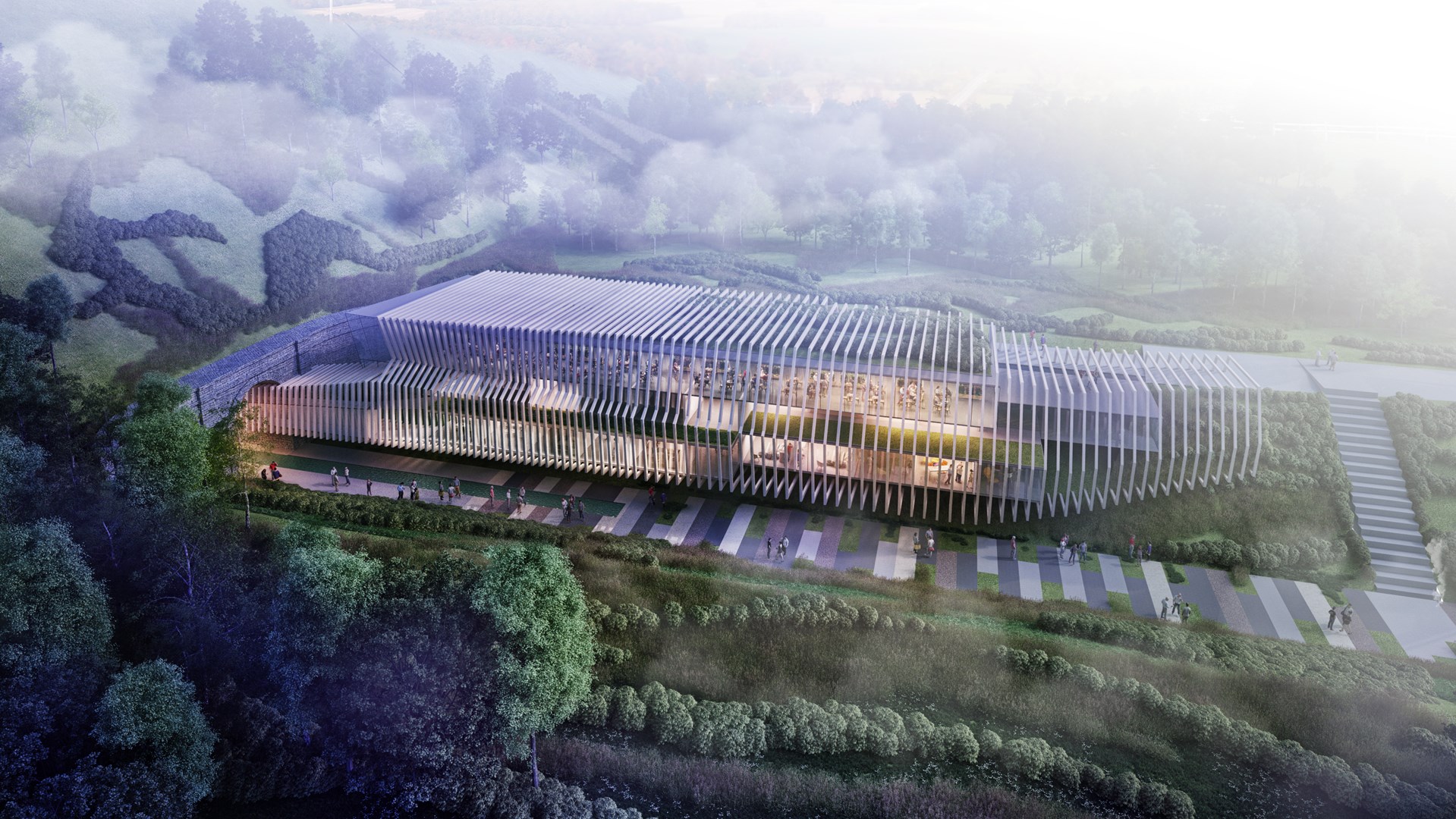Rhondda Tunnel shortlisted for a WAF Future Project Award for Culture



Rhondda Tunnel, set to be the longest digital art gallery in the world has been shortlisted for a WAF Future Project Award for Culture.
Celebrating the heritage and culture of the Valleys of South Wales, our design breathes life back into the abandoned 130-year-old Rhondda Tunnel, creating a unique visitor destination and placing Wales on the map for global tourism. The two mile long tunnel will be open to the public as a pedestrian and cycle route, with digital art gallery and performance space. Reconnecting communities at either end through the creation of a hotel at one end and a visitor centre, art galleries, digital theatre and performance space at the other.
The new hotel, located on the outskirts of the village of Blaencwm at the eastern entrance of the tunnel, provides guests with a unique experience of the Welsh valleys. Conceived as a series of tectonic plates, the hotel is nestled into the undulating landscape like a piece of embedded land art. A play on parallax, movement, velocity – an exoskeleton of digitally constructed timber ribs changes across the length of the building, alluding to the movement of a train as it disappears into the tunnel.
Visitors can hire bikes or walking gear on site, before exploring the tunnel and new community facilities located on the other side. The western entrance – located within the village of Blaengwynfi – is transformed into a visitor centre with art galleries, cafe, external performance space and digital theatre. Referencing local rail heritage, the galleries are conceived as a lump of coal with scorched black timber cladding elevated above the steep slopes of the tunnel entrance on slender stilts. This frames and allows for uninterrupted movement through the tunnel, increases natural passive surveillance, and minimises impact to the landscape.
Harnessing the steepness of the site, a double height exhibition space is created within the building, and an outdoor amphitheatre beneath. Evening performances are digitally projected onto the building which becomes part of the performance itself. Following structural repair and restoration, the almost two mile long tunnel will open to the public as a pedestrian and cycle route, digital art gallery and performance space. Elevated for safety, the pedestrian route provides a different perspective of both the tunnel and digital art installations. Working alongside digital art consultancy Lumen Art Projects, ideas were explored for installations that would spark the imagination and tell tales of the tunnels past. Existing light wells and ventilation shafts lined with metal create an immersive experience as they capture sounds of the valley, or broadcast music performances to communities above ground.
The largest light well is turned into a means of escape and evolves into a viewing tower above – a brass with perforated steel exterior references the brass bands of the mining valley. Visitors can also learn about the history and construction of the tunnel at the visitor centre. A materials palette of timber, glass and greening reflects the rural setting and supports the sustainable agenda. Rainwater and run-off is collected within a rain garden, and used to reduce fresh water demand and consumption. The scheme will be designed to achieve BREEAM Excellent or equivalent, with opportunities explored for use of geothermal energy sources.
Many congratulations to all involved. Discover more here.
You're looking for exceptional architecture. We're looking for exceptional projects. Let's start a conversation
Enquire